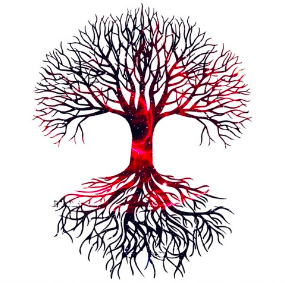About DNM
What Is Dermoneuromoduating?
An explanation for a new manual therapy approach
The term DNM Stands for Dermo (skin), Neuro (nervous system) Modulation (a change from one state to another). It is a method of manual therapy/massage therapy used to change the state of the nervous system from a painful hyperactive state to a less painful and reactive one. Diane Jacobs, a Canadian PT with over 40 years of experience, developed DNM as a way to treat people with chronic and persistent pain better. I have had the lucky pleasure of learning directly from and working with Diane over the last four years.
In the world of Manual Therapy (MT), hundreds of techniques and methods attempt to approach treating people in pain. These maneuvers' speed, duration and force may differ, but the underlying mechanistic effects all follow the same rules. They can all agree that we push, pull and twist skin directly and soft tissue indirectly.
Lately, there has been considerable growth in research around the mechanisms of massage and other manual therapies, with a drift into the neuroscience involved in pain.
Two processes seem to be apparent when we look at the research:
The effects of touch have strong psychological and physiological effects.
The nervous system controls these effects.
If we use Manual Therapy as a treatment for pain resolution, we should look at understanding pain physiology within a social, biological and psychological framework.
What we know from studying the non-specific effects of physical medicine is that we should strive for a treatment environment that creates the least amount of threat to the person being treated; therefore, We should act, dress and keep the treatment space in a way that won’t put the patient on the defensive.
We know that we touch the skin primarily in manual therapy and that the skin is intimately tied into the nervous system embryologically as both arrive from the ectoderm.
We know that the Nervous System makes up around 2% of our body by weight but uses 20% of our O2 and Glucose at all times.
The nervous system carries impulses from the peripheral (and from within), which are processed in the spinal cord and brain to create an output response. If the impulses are deemed dangerous enough, the output is pain.
We know that pain is a complex process that depends on contextual, psychological and biological factors that mostly happen without our conscious perception and that pain can’t happen without a nervous system.
The human body has 72 kilometres of nerves, and they are intimately connected to the vascular system millimetre by millimetre.
Nerves do not respond well to sustained mechanical deformation, specifically, compression more than stretch.
Dermoneuromodulating is a method that attempts to take these facts as an underlying framework for an interactive, hands-on approach to treating the experience of pain. It considers the nervous system of the patient to treat from “skin cell to sense of self.” Techniques are usually light, and holds are slow. Limbs and trunk are positioned to affect deeper nerve structures in combination with skin stretch. This is done to potentially shorten and widen a nerve's container, thus reducing mechanical deformation of the nerve.


